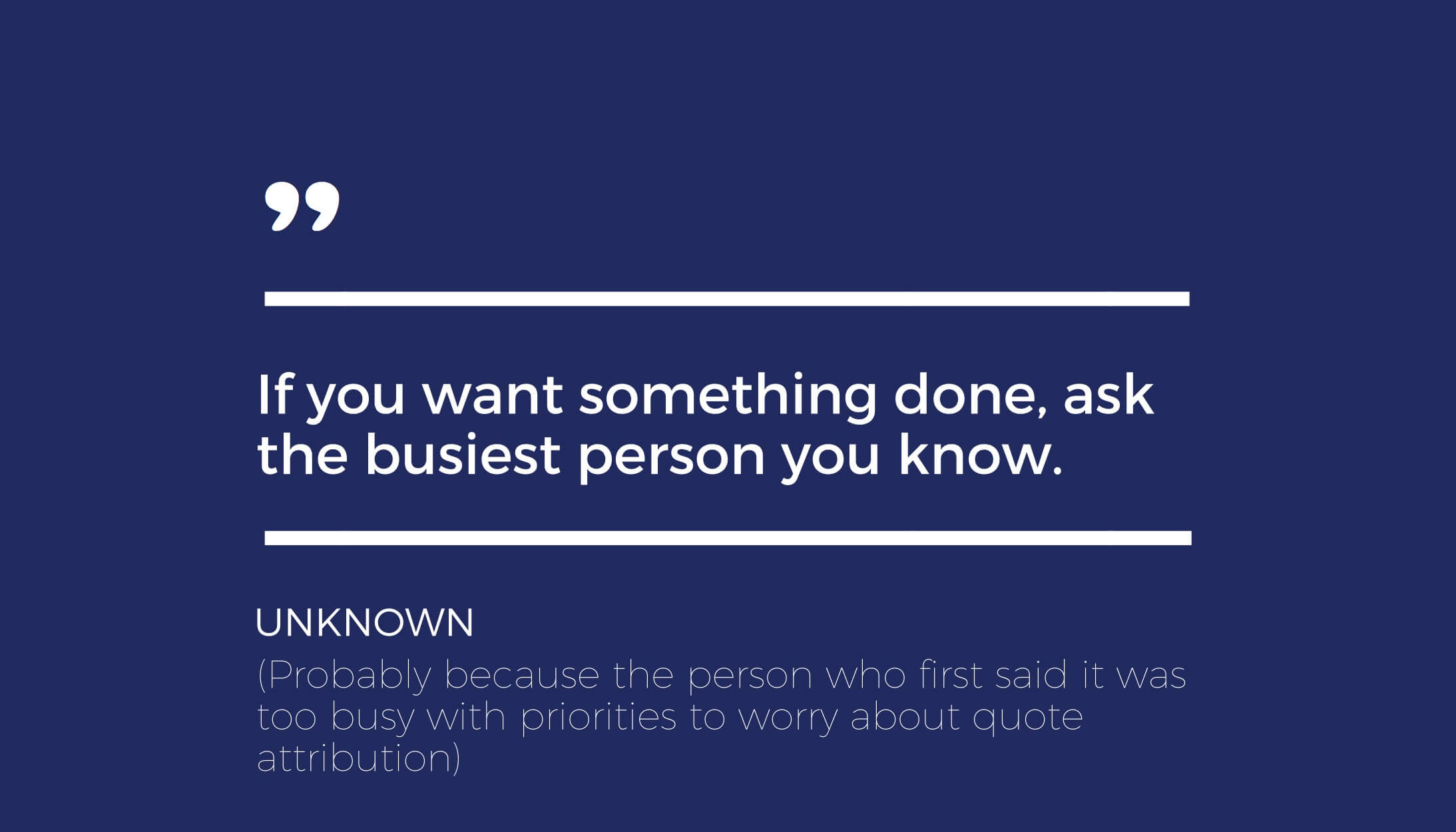I can quickly recognize people who will excel in leadership positions, often long before they’re anywhere near that level.
I don’t have a crystal ball. But I do have enough experience to have identified the single most consistent indicator of leadership potential.
Of course, many traits can contribute to success in leadership. And no 1 formula or attribute mix guarantees leadership excellence. Many recipes work!
But 1 pattern of attitude and behavior seems inextricably tied to great leaders. Based on my experience, if a person exhibits this tendency, he or she is 97%* more likely to be very effective in a high-level leadership position.
* This statistic is completely anecdotal and basically made up. But it feels about right to me.
So I can start working with a guy who’s currently a mid-level manager overseeing a few folks in Phoenix, and tell you that he’s probably going to end up becoming vice president of his division.
I can begin coaching a young lady who was just hired as a project manager and peg her as future C-suite material.
I can schedule a meeting with a new hire and predict his ascension up the career ladder at a pace that eclipses his peers.
And I’m often right.
How do I know? 3 words: Get It Done.
The Get It Done Approach
Strong leaders get it done.
At first blush, this can seem deceptively simple, even basic. But it’s actually quite advanced and challenging to cultivate.
So let’s take it in pieces:
1. What does a Get It Done approach look like?
2. Why is it so valuable?
3. What are 2 steps toward growing this behavior in yourself and/or your people?
What Does Get It Done Look Like?
I recently kicked off a feedback session for a mid-level manager in a very large organization. He invited feedback from 12 people, ranging from those who work under him to high-level leaders 4 levels above him. Per the usual, he introduced me to each of his selected participants personally via e-mail, asking them to setup a meeting with me to get started.
Within 5 minutes, the highest level contributor had responded with a meeting time, and we had our meeting the next day.
The next 2 highest level people had confirmed and completed their meetings within 3 days’ time.
Meanwhile, I’ve sent 2 follow-ups to each of the middle and lower level people, and I still don’t have meetings scheduled with any of them.
At first blush, this seems counterintuitive. Presumably, the higher level folks have a lot on their plates. So how do they manage to tackle things so efficiently?
 Simple: efficiency isn’t about what’s on your plate. It’s about how you handle your plate.
Simple: efficiency isn’t about what’s on your plate. It’s about how you handle your plate.
Do you stare at it? Fret over the items on it? Reorganize it? Or dig in?
Even better, do you dig into what’s most nourishing?
Inherently strong leaders tend to get things done in a way that stands out as quicker, more efficient, and/or more decisive than most. Moreover, they get the nourishing things done—the priorities.
It’s also worth noting that their Get It Done attitude tends to become an approach that applies to most everything they do, whether scheduling a meeting, outlining a strategy, making a hire, vetoing an idea, booking travel, reading an important book, or getting their haircut.
In other words, whether the move is big or small, they don’t dawdle. In one way or another, they handle it.
The Value of Getting it Done (Right)
This is where a really important caveat comes into play:
I’m not praising those who get things done here, but those who Get It Done. It being the priority—the thing that matters.
Loads of people are out there getting the wrong things done all day every day. They’re always “doing.” But they’re not achieving much.
What’s the difference between these folks and the exceptional few we’re examining here? Priorities.
The most effective leaders are ruthlessly priority driven. Their Get It Done approach is incredibly valuable because their actions are based on driving momentum toward a specific vision.
Sounds like a slick formula for achieving the right goals, doesn’t it?
Exercising Your Get It Done Muscle
Here’s some good news:
Getting it done is not an attribute. It’s a skill.
You can study the difference between attributes and skills elsewhere if you’re not already familiar with this important concept, but here’s the point: if you’re not great at Getting It Done today, you can get good at it.
I’m not going to sugar coat this. It might not be easy (and yes, those with certain attribute profiles are likely to have an easier time). But mostly, you’ll need determination and practice. You’ll need intentionality. And you’ll need a plan.
Here are your first 2 steps:
1. Get Clear on the Vision
If you want to be a Get It Done’er, you simply must
- Have a vision
- Let that vision drive your decisions and actions
If when I say “vision” you say “huh?”, start by educating yourself on personal vision and life purpose.
Then, check out my forthcoming vision audio course. It will map out a step-by-step approach for creating your own vision and embarking on the all-important process of living it out.
2. Start Practicing
I’ve written before that the best training ground for leadership is a job with zero reports. So perhaps you can already answer this one:
What’s the best time to start exercising your Get It Done muscle? Before you’re in some high-level leadership position with 3 assistants and a team underneath you. Before you have a bunch of extra support.
This way, once the matters you’re dealing with have more massive implications, you’ll already know what it takes to Get It Done effectively.
Your “practice” should mimic the Get It Done actions of inherently strong leaders. So when you’re confronted with an item that requires action:
- Proceed swiftly but thoughtfully, with vision-driven priorities guiding your decisions
- Take action as soon as possible
- Move things forward to a sensible point—whether the end point, the pass-it-off point, or the now-we-need-to-wait-for-x point
And on to the next.
Notice what you didn’t do here:
You didn’t shove the task to a backburner, which could have led to you touching it 6 times instead of once, sucking up loads of extra time.
And you didn’t get waylaid by the noisy thing or the shiny thing or the thing-that’s-always-on-your-do-list thing. You let vision-driven priorities guide you. So unimportant things never made it to the front burner in the first place—or any burner at all, for that matter.
So in the end, you recognized the priorities and took them as far as you could.
In short, you Got It Done.
Now keep it up.




Leave a Reply